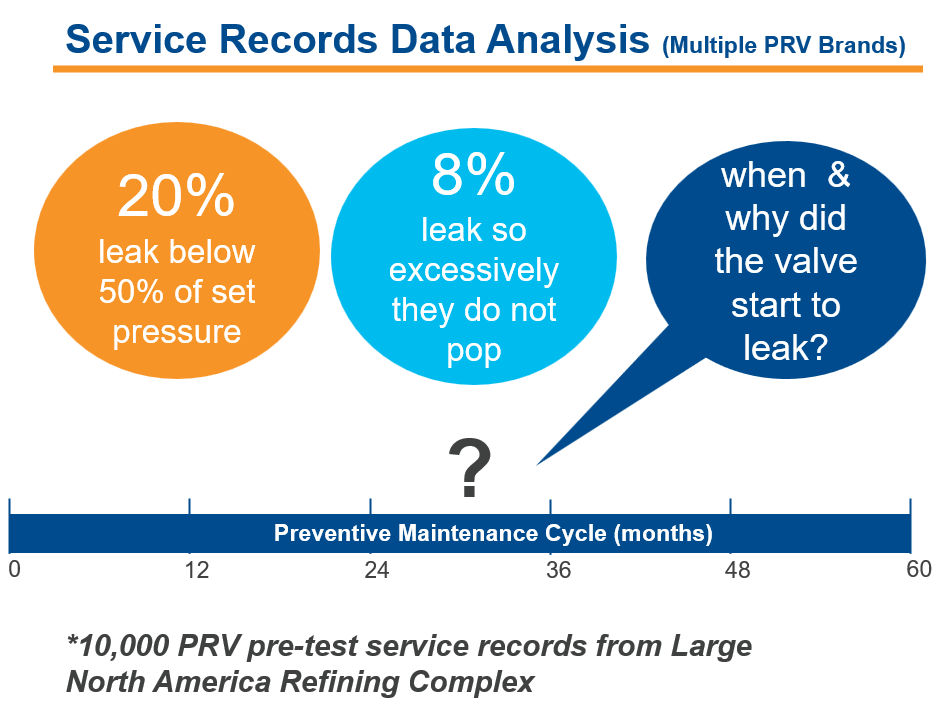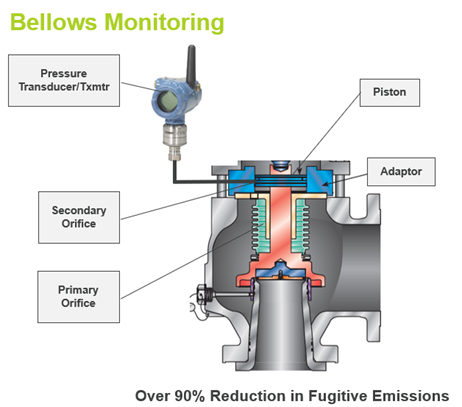At the 4C Health, Safety & Environmental Conference, Emerson’s Ricardo Garcia and Mo Fazl presented New Regulation Compliance Through PRV Monitoring Technologies. Ricardo described how pressure relief valves are the last line of defense for over- and under-pressure conditions. They are self-operated mechanical devices that are typically off-grid/not connected, are pervasive across most plants that, can cause emissions and losses, and cannot be bypassed.
 Undetected and unreported relief events can occur more often than one might expect. Ricardo shared the results of a study of service records performed by Emerson and its representative network.
Undetected and unreported relief events can occur more often than one might expect. Ricardo shared the results of a study of service records performed by Emerson and its representative network.
The consequences of these issues affect emissions, production, reliability, and safety. The U.S. Environmental Protection Agency (EPA) MON regulations, 40 CFR 63.2480, is similar to the 2019 regulation that applied to the refining sector but with stricter rules and less ambiguous wording for monitoring device requirements. According to the EPA, the regulation will reduce HAP (Hazardous Air Pollutants) emissions by 16,800 tons per year from existing facilities that manufacture various organic chemicals. The regulation looks at pressure relief devices (PRDs) that are relieving to the atmosphere and are in HAP service.
The regulations state that you must equip each affected pressure relief device with a device(s) or use a monitoring system that is capable of:
- Identifying the pressure release
- Recording the time and duration of each pressure release
- Notifying operators immediately that a pressure release is occurring
The device or monitoring system must be either specific to the pressure relief device itself or associated with the processing system or piping, sufficient to indicate a pressure release to the atmosphere. Examples of these devices and systems include but are not limited to a rupture disk indicator, magnetic sensor, motion detector on the pressure relief valve stem, flow monitor, or pressure monitor.
 There are several solutions for monitoring pressure relief valves. The first one Ricardo discussed is a wireless acoustic sensor. The Rosemount 708 acoustic sensor attaches to the outlet of a PRV and measures the acoustic vibrations that occur during a release. Temperature is also measured, which looks for a rate of change of temperature that help confirm the relief event. These sensors cannot tell the release amount, only the duration.
There are several solutions for monitoring pressure relief valves. The first one Ricardo discussed is a wireless acoustic sensor. The Rosemount 708 acoustic sensor attaches to the outlet of a PRV and measures the acoustic vibrations that occur during a release. Temperature is also measured, which looks for a rate of change of temperature that help confirm the relief event. These sensors cannot tell the release amount, only the duration.
A second solution is a position monitor on the travel of the pressure relief valve stem. This monitoring method gives the duration and the release amount.
The final solution is a pilot-operated PRV with a Rosemount differential pressure transmitter. The transmitter measures the pressure on each side of the PRV. When the DP transmitter measures zero, the PRV is closed. The DP measurement goes positive when pressure bleeds, indicating a release event. A modulating pilot-operated valve measures the actual flow during a release event.
There can be backpressure in the outlet side of the PRV for pressure relief systems with common headers. This pressure must be balanced with the inlet pressure, or the relief pressure setpoint is offset. Bellows are a solution to avoid this backpressure issue. The bellows can rupture, defeating this pressure equalization and, worse, providing a path for fugitive emissions out of the bonnet of the PRV. Mo described the solution with a Rosemount pressure transmitter that offers bellows leak detection to determine when the bellow fails and keeps the pressure equalized to eliminate the back pressure problem.
Visit the Pressure Relief Valve Monitoring section on Emerson.com for more information on each of these monitoring methods for reduced fugitive emissions and accurate regulatory reporting.
